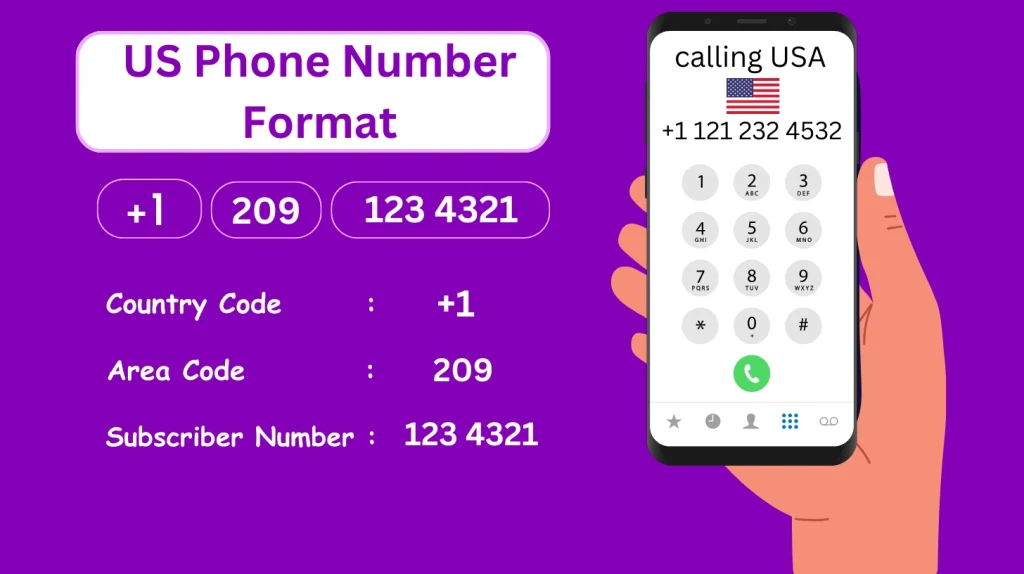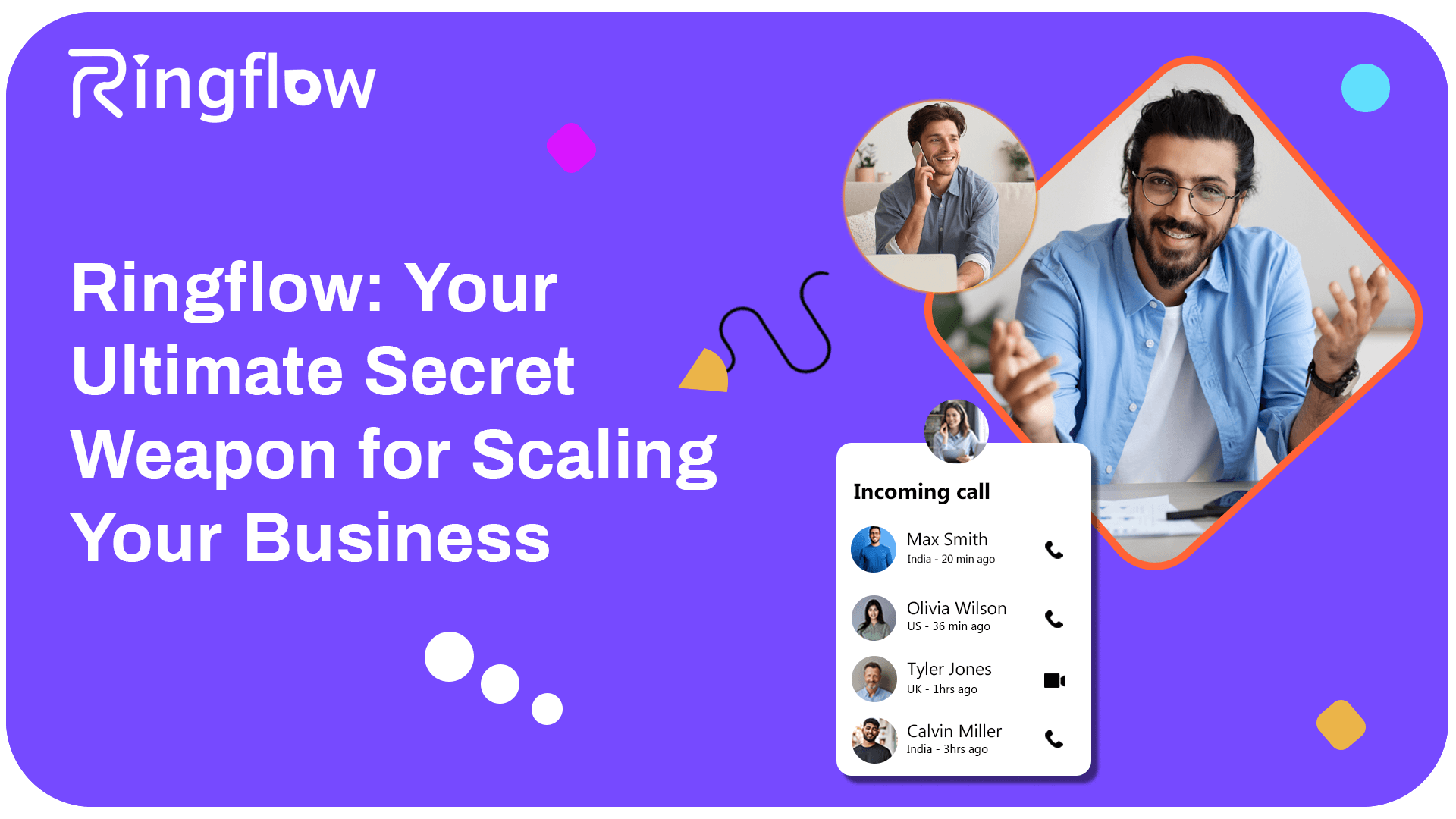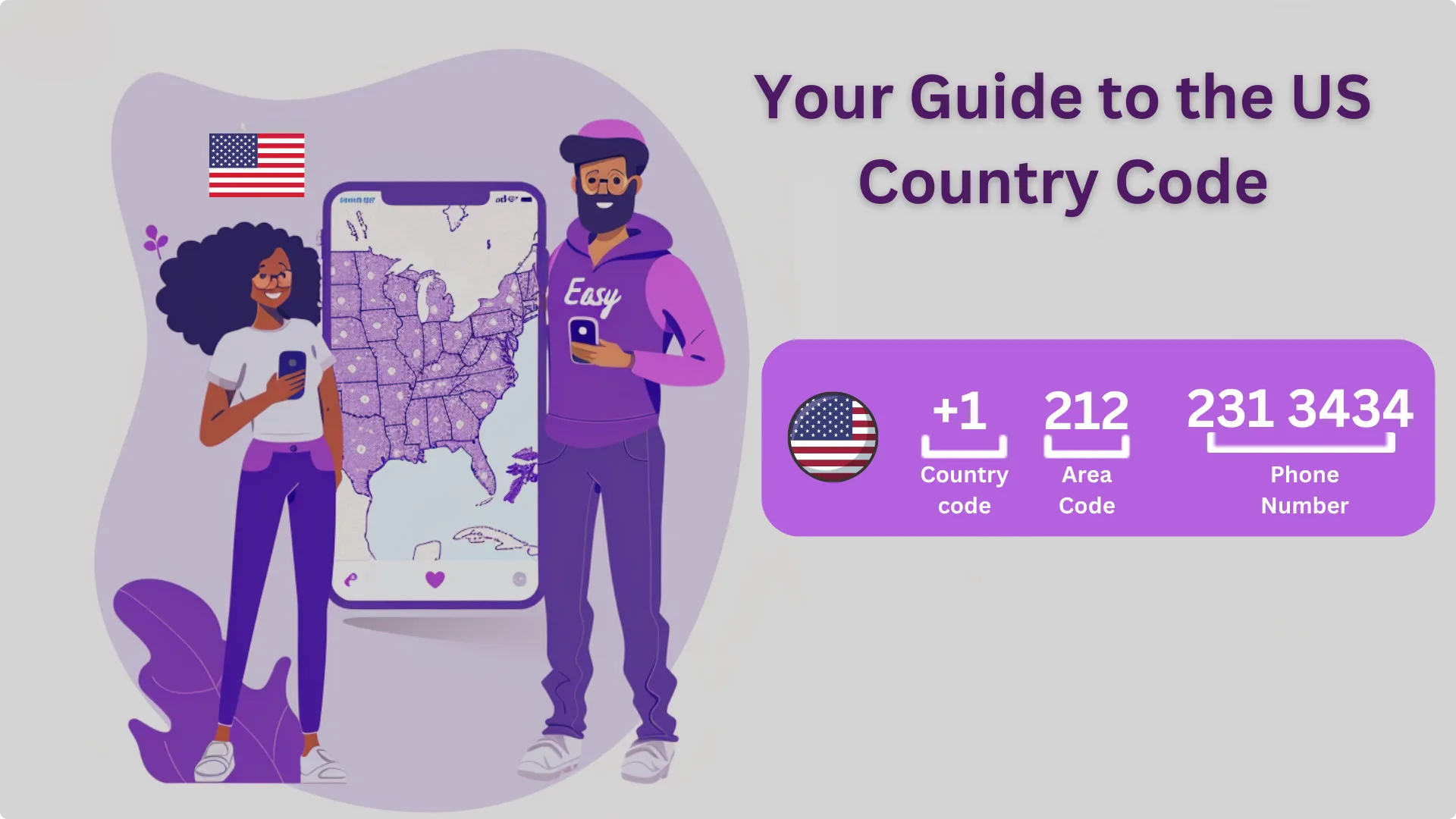The standard US phone number format consists of 10 digits made up of a 3-digit area code and a 7-digit local number. This format applies to US Phone Number in the United States, whether they are regular landlines, cell phones, or Voice over IP (VoIP) numbers. The area code specifies a geographic region or city, while the 7-digit number identifies a specific line. Some key rules regarding the US Phone Number format include: you must dial 1 before the area code for long-distance calls, US Phone Number start with 800, 866 or a similar prefix, and when calling from another country you need to first dial 011 then 1 for the US country code. Understanding the proper 10-digit formatting and dialing rules is crucial for successfully connecting calls within and to the United States. This article will provide examples and further explain the US phone number system.
Local US Phone Numbers
A local US phone number is one that connects to a phone line in a specific geographic area. Local numbers have 10 digits – a 3 digit area code, followed by a 7 digit local number. For example:
555-123-4567
Here, 555 is the area code and 123-4567 is the local phone number. When dialing a local number from within the same area code, you can omit the area code and just dial the 7 digit number.
Some parts of the US also have overlay area codes in the same region. This means there may be two or more area codes covering the exact same geographic area. In those cases, you have to dial the full 10-digit number, including the area code, even for local calls.
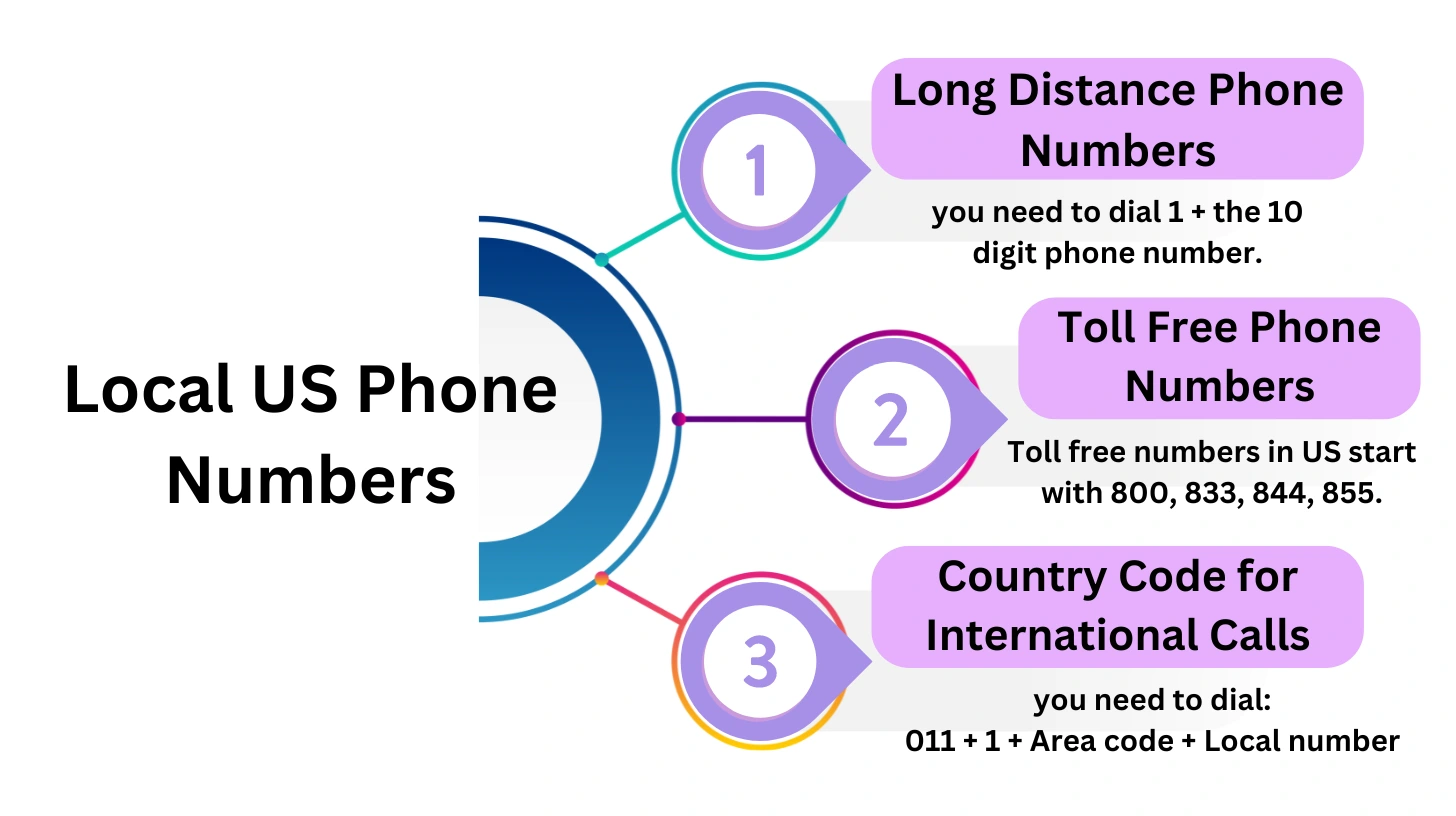
Long Distance Phone Numbers
For long distance calls within the US to an area code outside your local region, you need to dial 1 + the 10 digit phone number. The 1 lets the phone system know this is a long distance call. For example:
1-555-123-4567
This dials a phone number with area code 555, which is outside the local calling area.
Toll Free Phone Numbers
Toll free numbers in the US always start with 800, 833, 844, 855, 866, 877, or 888. For example:
800-123-4567
These numbers are free to call from anywhere within the US. Businesses often use toll free numbers so customers can call them without being charged long distance fees.
US Country Code for International Calls
When calling a US number from another country, you need to dial:
011 + 1 + Area code + Local number
The 011 tells the phone system this is an international call. The 1 is the country code for the United States. After dialing 011 and 1, you then add the US area code and local number.
So for example, to call 555-123-4567 from abroad, you would dial:
011-1-555-123-4567
This ensures the call is properly routed to the US phone network and connects.
Example US Phone Number
Here is an example US phone number with proper formatting:
555-123-4567
This is a standard 10 digit phone number with area code 555 and local number 123-4567. This could be a fixed landline or mobile number located somewhere in the US with the 555 area code.
To call this number from the same area code, you would dial:
123-4567
From another part of the US, you’d dial:
1-555-123-4567
And from another country, you’d dial:
011-1-555-123-4567
This ensures the call goes through and follows proper formatting based on where you are calling from.
Tips for Calling the US from Another Country

When calling the US from overseas, follow these tips:
- Dial 011 to initiate an international call
- Dial 1 for the US country code
- Include the full 10 digit US number – area code + local number
- Obtain a US international calling card for lower rates
- Call during US off-peak hours to save money
- Ensure your cell phone plan includes international dialing
- Use internet calling like Skype or WhatsApp when possible
- Verify the number is correct before dialing to avoid errors
- Check with your local phone company for specific dialing instructions
Being aware of the proper dialing format when calling the US from abroad will ensure you connect successfully. The main thing to remember is dialing 011 then 1 before the rest of the US number. With the right dialing code and format, you’ll be talking to your American friend or business in no time.
Why US Numbers Have 10 Digits
Why do phone numbers in the US have 10 digits, instead of a shorter length? There are a few key reasons:
- Large population – With over 300 million people, more numbers are needed to provide unique lines to all US consumers and businesses.
- Multiple area codes – Area codes enable geographic-specific phone numbers for large metro areas and regions.
- Increased devices – Landlines, cell phones, faxes and more require more available numbers.
- Uniform digits – Having a standard 10 digit length makes dialing easier across the large US phone network.
- Number expansion – 10 digits provides billions of possible number combinations, leaving room for future growth.
- Call routing – The digit lengths enable efficient call routing across the complex national telephone infrastructure.
Overall, the 10 digit format struck the right balance between providing enough unique numbers for the large US population, while keeping the length uniform and manageable when dialing.
History of the US Phone Numbering Plan
The US telephone numbering plan as we know it today has its origins back in the 1940s. Here is a brief history:
- 1940s – Bell System introduces area codes and all-number calling in major cities
- 1960s – Number standardization began, leading to current 1-NPA-NXX-XXXX format
- 1981 – 1+ area code required for long distance calls
- 1990s – Rapid growth leads to adding overlay area codes in some locations
- 2000s+ – Cell phones, fax machines, and VoIP numbers drive number expansion
The original area codes were mapped out geographically with certain major cities getting the lowest numbers. Additional area codes were added over time in the highest demand regions. This led to running out of numbers in some locations, hence the introduction of overlays.
Despite all the changes over the decades, the fundamental 10 digit numbering scheme itself has remained the same since the 1960s. This consistency has allowed the US phone system to scale and grow rapidly along with demand over the past 70+ years.
Common US Area Codes
While there are over 300 area codes across the United States, some are far more widely recognized than others. Here are some of the most common and famous US area codes:
- 212 – Manhattan in New York City
- 213, 323 – Los Angeles, California
- 312 – Downtown Chicago, Illinois
- 415 – San Francisco, California
- 617 – Boston, Massachusetts
- 702 – Las Vegas, Nevada
- 718 – The Bronx, New York City
- 800 – Toll free numbers
- 901 – Memphis, Tennessee
- 813 – Tampa, Florida
Area codes with lower digits like 212, 212 and 415 were assigned to major cities first. Numbers starting with a middle digit like 0, 1 or 9 are more rare. Many famous places became closely associated with their area code based on TV shows, songs, movies and more. Businesses also intentionally seek out certain area codes to have local numbers in major cities.
In the 1990s, overlay codes began being added to handle number demand. Now most major metros have multiple area codes co-existing in the same regions. However, the most historic codes are still widely recognized.
Famous US Phone Numbers
Beyond just area codes, some actual phone numbers have become famous over the years:
- 866-OUR-VOTE – Non-profit hotline for voter issues
- 844-USA-GOV1 – Toll free US government help line
- 800-273-8255 – National Suicide Prevention Lifeline
- 212-123-4567 – Fictional Manhattan number used in TV/movies
- 555-0100 – Fictional 555 exchange used in films/TV
- 202-456-1414 – White House switchboard number
Many movies and television shows use the 555 exchange for fictional phone numbers to avoid showing a real person’s number. The White House and other government entities have memorable numbers for the public to call. Non-profits also strive for numbers that spell out key words and are easy to recall.
While not used as much in the cell phone age, phone numbers themselves have been influential in pop culture, businesses and government over the years. The most famous live on even as the technology changes.
Number Portability and Keeping Your Phone Number
Thanks to number portability, you can typically keep your phone number when you:
- Switch cell phone carriers
- Move your landline to a new provider
- Transfer residential service across geographic areas
Number portability is made possible by intelligent switching systems that can route your number to the new provider. As long as you stay current on your bill, you usually maintain control of your number. This convenience has helped many customers upgrade their mobile service and landlines more easily.
To port a number, you simply request the transfer when signing up for service with the new company. They notify your existing provider to release the US Phone Number and switch it over on the designated date. The process typically takes anywhere from a few hours up to a few days to complete. This allows a smooth transition to the new service.
Thanks to number portability, US consumers have more flexibility and options when it comes to their phone service. It saves the hassle of having to notify all contacts of a new number each time you switch providers. Maintaining stability of your established phone number is a key benefit of number portability.
VoIP Numbers and How They Work
VoIP – which stands for Voice over Internet Protocol – has become a common way for making voice calls using the internet rather than traditional phone lines.US Phone Number work differently than regular landline or US Phone Number.
Here are some key facts about VoIP numbers:
- Assigned in pools to VoIP providers
- No geographic relation
- Often begin with area code 325, 563 or other non-major areas
- Used with VoIP desk phones, mobile apps and virtual PBX systems
- Calls routed over internet data networks
- Portable – can move geographically and between devices
For example, you can obtain a US Phone Number with an area code like 563 even if you’re located in New York. The number isn’t tied to a physical location. VoIP offers great flexibility since you can use the same number on your office desk phone, softphone on a laptop, or smartphone app.
US Phone Number bridge the gap between traditional telephone infrastructure and internet-based calling. This technology allows businesses and consumers to benefit from phone service on their existing broadband connections.
Differences Between Landline, Mobile and VoIP Numbers
Landline, mobile and US Phone Number in the US share the standard 10 digit format – but there are some key differences:
Landline
- Geographic number related to a physical address
- Associated with a phone socket in a building
- Service from traditional telecom company
- More limited portability options
- Uses circuit-switched telephony
Mobile
- Tied to a SIM card in a smartphone
- Portable anywhere
- Cellular service from wireless carrier
- Keep your number when switching carriers
- Uses cellular networks for connectivity
VoIP
- Virtual number not tied to geography
- Used on VoIP desk phones, softphones or smartphone apps
- Service from ITSP VoIP provider
- Full portability across devices and locations
- Uses internet data for call transport
While US Phone Number have become more predominant, landline and US Phone Number both still serve important business and consumer needs. The right solution depends on your specific calling requirements.
Vanity Numbers and mnemonic phrases
Some businesses obtain special vanity US Phone Number that spell out a word or phrase. These are known as mnemonic or alphanumeric numbers. For example:
- 1-800-FLOWERS
- 1-800-GOT-JUNK
- 1-800-BATTERY
Rather than having to remember a random string of digits, the spelled out words help consumers recall the number. This makes it more likely they will use that business vs competitors.
Most vanity numbers are US Phone Number, but sometimes local numbers can spell things out using the digits on the keypad:
- 1-800-NEW-CARS = 1-800-639-2277
- 1-800-VACATION = 1-800-822-2846
- 555-JUICE = 555-5883
There are also services that allow you to text a custom keyword to a specific number, which replies with your business’ contact information.
Vanity numbers and mnemonic phrases make it easier for potential customers to find and remember your US Phone Number when they need your products or services. They are an easy way to improve retention and recall.
How to Obtain a New Phone Number
There are a few easy ways to obtain a brand new US Phone Number in the US:
New cell phone service – Any new mobile account will come with a US Phone Number assigned to you. Just activate service with the carrier of your choice.
Add a line to existing mobile plan – You can add a new line and number to a family plan or shared service account.
Port your number out and back in – Port your number to a VoIP service, then port it back to your carrier to reset it.
Change carriers – Switching mobile carriers usually assigns a new number.
New landline service – Ordering home phone service from the local provider will give you a new number.
Purchase a VoIP number – VoIP providers can assign you a brand newUS Phone Number for calling.
Use Google Voice – Google Voice gives you a free virtual number to use.
The easiest and most common way is signing up for new mobile phone service. But other options exist if you want to proactively request a number change from your existing provider.
Private Number Call Blocking
Unwanted calls from private numbers and anonymous parties can be annoying or raise safety concerns. Thankfully, there are ways to block these mystery callers:
Mobile carriers – Most offer call blocking features in your account or app to stop private numbers.
Smartphone apps – iOS and Android devices have call screening and blocking apps to download.
Carrier call screening – Enable this service with your mobile carrier to identify and filter out bad numbers.
Landline call blocking – Home phone providers have options to block anonymous calls.
Nomorobo – Third party app to block robocalls and telemarketers.
Google Voice – Use Google Voice number as a shield and disable ringing from unwanted callers.
Ask contacts to identify calls – If a regular contact has private ID, request they dial *82 first to unblock it.
Using a combination of mobile carrier tools, third party apps and smart device settings can help minimize unwanted calls from hidden and anonymous US Phone Number. Protect your peace of mind and personal information.
911 Emergency Services
Dialing 911 on any phone in the United States will connect you to emergency services in your area. This includes:
- Police – For crime reports or emergencies
- Fire department – For fires and medical emergencies
- Paramedics – For medical situations needing ambulance
Some key facts about 911 service:
- Works on both mobile phones and landlines
- Completely free to call
- Operates 24/7 year round
- Can determine your location automatically
- Language services available if needed
- Text-to-911 options for those with hearing loss
- Special services for elderly and disabled
Only call 911 for true emergencies – serious crime, fire, medical crisis, etc. Misuse can result in fines. Teach children proper 911 usage.
911 provides fast, universal access to first responder services across the US. In times of emergency or crisis, it can summon the help needed to save lives.
Fraudulent Calls and How to Avoid Them
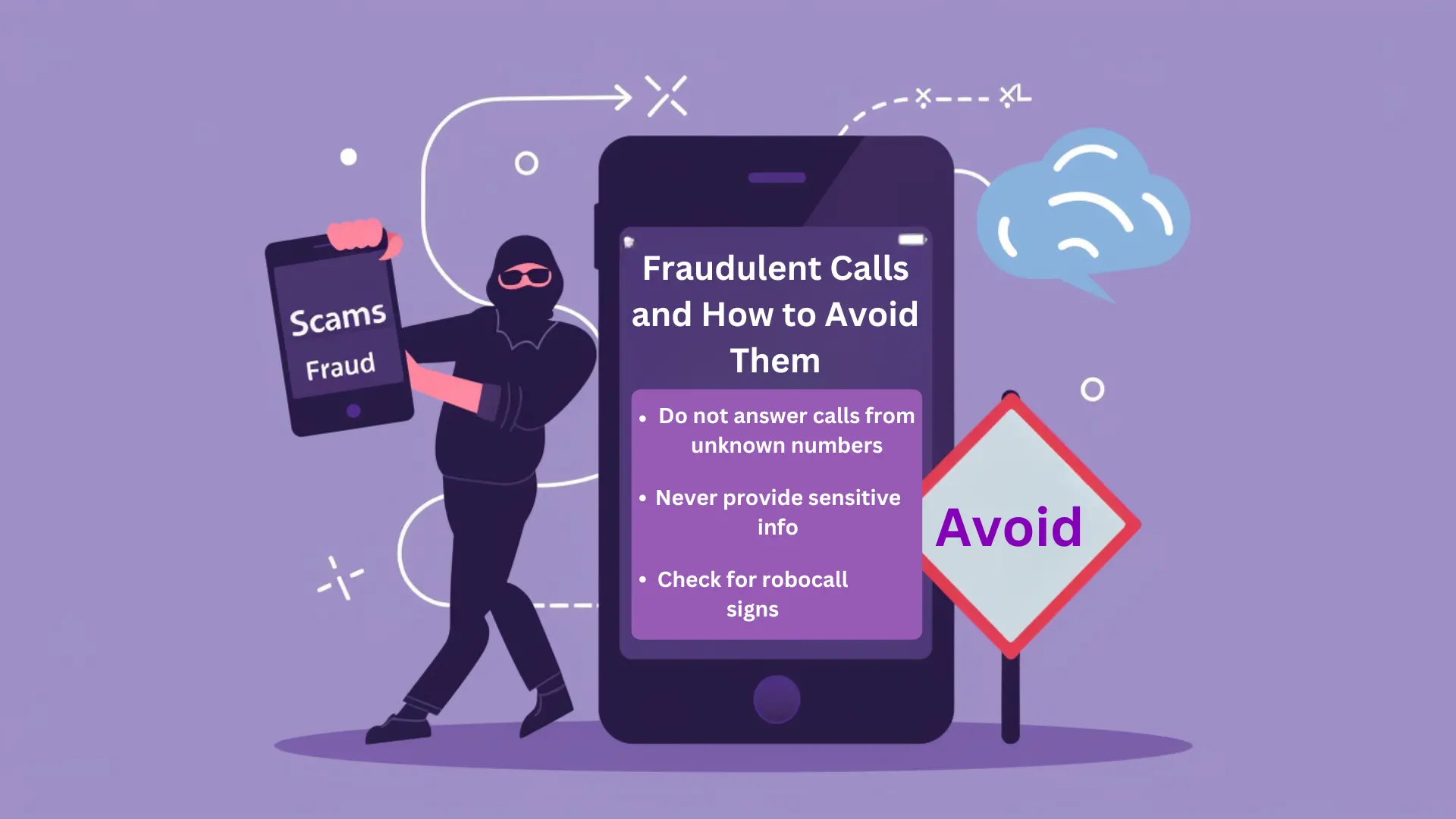
Unfortunately, scammers often use phone calls to perpetrate frauds against consumers. Some ways to recognize and avoid fraudulent calls:
- Do not answer calls from unknown numbers – Let them leave voicemail
- Watch for number spoofing – Scammers fake real US Phone Number. Verify legitimacy.
- Reject prize offers – It’s illegal to charge fees for contest wins.
- Hang up on threats – IRS, SSA and utility companies do not make threatening calls.
- Be wary of urgent pleas for money – Common scam tactic. Verify independently.
- Never provide sensitive info – Scammers aggressively fish for your details.
- Check for robocall signs – Pre-recorded message, strange callbacks.
- Register your number on the Do Not Call list – Reduces unwanted solicitation.
- Use call screening and blocking tools – Available from carriers and smartphone apps.
- Report scam callers – File complaint with FCC, FTC and your phone provider.
Exercising caution, verifying legitimacy and using technical tools can help protect you from illegal scam calls. Never panic or make payments based solely on telephone pressure tactics.
United States Area Codes
The United States has a total of 317 area codes as of August 2023, distributed across different states and regions, with each code assigned to a specific geographic area or overlay, allowing for efficient allocation and management of telephone numbers throughout the country.
Southern Region Area Codes:
| State | Area Codes |
|---|---|
| Alabama | 205, 251, 256, 334, 938 |
| Arkansas | 479, 501, 870 |
| Florida | 239, 305, 321, 352, 386, 407, 561, 627, 689, 754, 772, 786, 813, 850, 863, 904, 941, 954 |
| Georgia | 229, 404, 470, 478, 678, 706, 762, 770, 912 |
| Kentucky | 270, 364, 502, 606, 859 |
| Louisiana | 225, 318, 337, 504, 985 |
| Mississippi | 228, 601, 662, 769 |
| North Carolina | 252, 336, 704, 743, 828, 910, 919, 980, 984 |
| Oklahoma | 405, 539, 580, 918 |
| South Carolina | 803, 843, 854 |
| Tennessee | 423, 615, 629, 731, 865, 901, 931 |
| Texas | 210, 214, 254, 281, 325, 346, 361, 409, 430, 432, 469, 512, 682, 713, 726, 737, 806, 817, 830, 832, 936, 940, 956, 972, 979 |
| Virginia | 276, 434, 540, 571, 703, 757, 804 |
| West Virginia | 304, 681 |
Western Region Area Codes:
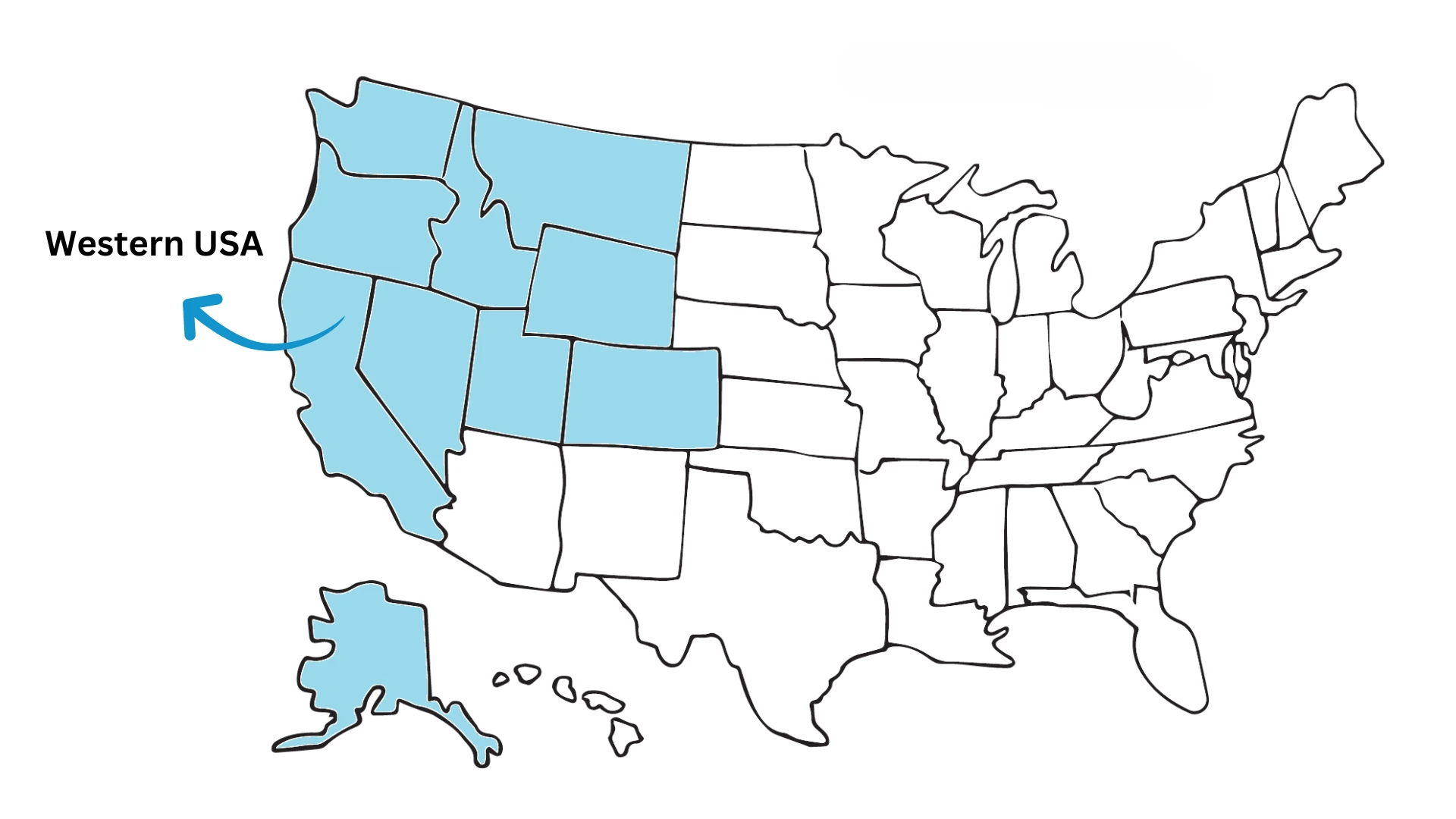
| State | Area Codes |
|---|---|
| Alaska | 907 |
| Arizona | 480, 520, 602, 623, 928 |
| California | 209, 213, 279, 310, 323, 341, 369, 415, 424, 442, 510, 530, 559, 562, 619, 626, 628, 650, 657, 661, 669, 707, 714, 747, 760, 805, 818, 831, 858, 909, 916, 925, 949, 951 |
| Colorado | 303, 719, 720, 970 |
| Hawaii | 808 |
| Idaho | 208, 986 |
| Montana | 406 |
| Nevada | 702, 725, 775 |
| New Mexico | 505, 575 |
| Oregon | 458, 503, 541, 971 |
| Utah | 385, 435, 801 |
| Washington | 206, 253, 360, 425, 509, 564 |
| Wyoming | 307 |
Eastern Region Area Codes:
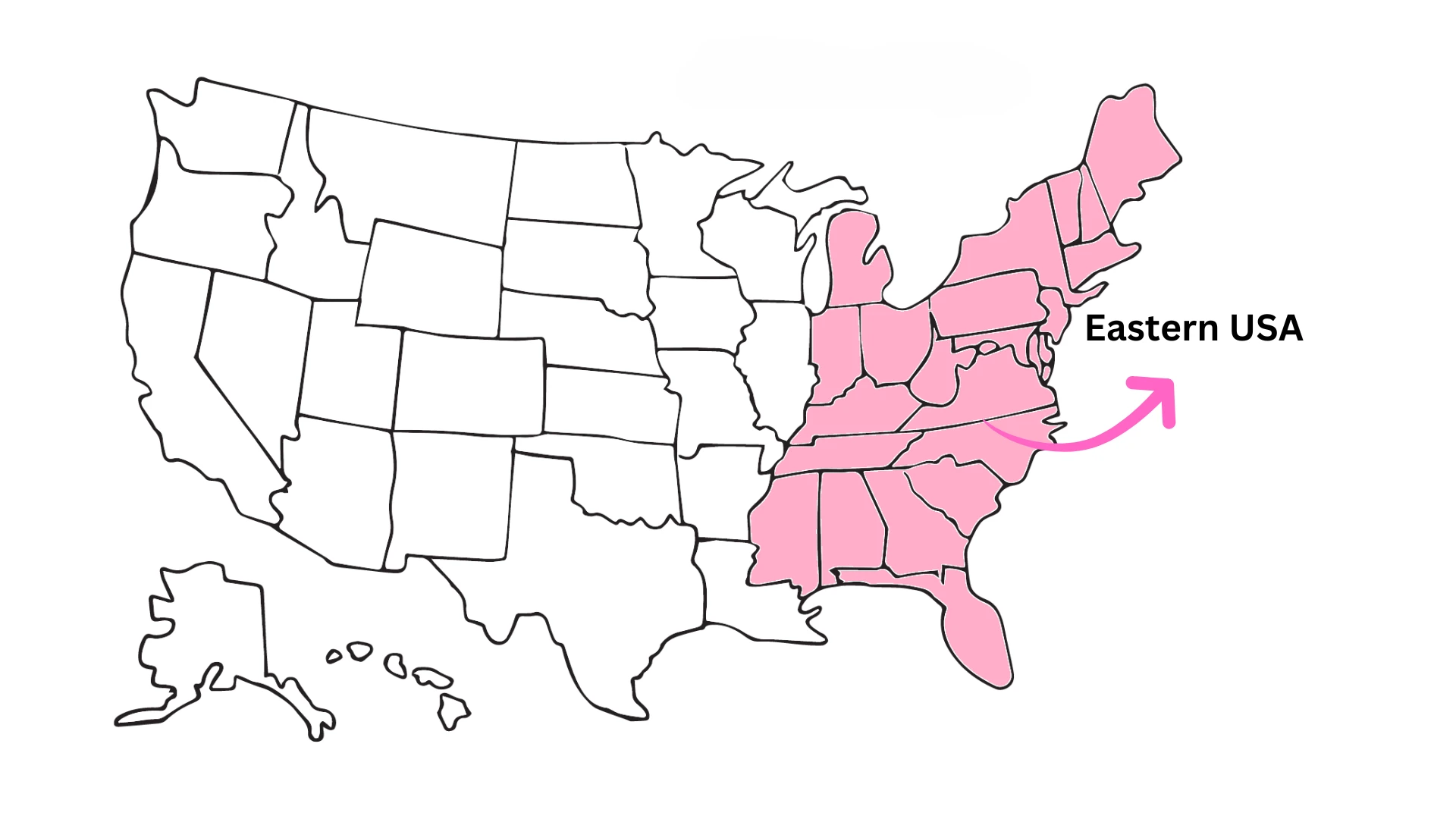
| State | Area Codes |
|---|---|
| Connecticut | 203, 475, 860, 959 |
| Delaware | 302 |
| District of Columbia | 202 |
| Illinois | 217, 224, 309, 312, 331, 447, 618, 630, 708, 773, 779, 815, 847, 872 |
| Indiana | 219, 260, 317, 463, 574, 765, 812, 930 |
| Iowa | 319, 515, 563, 641, 712 |
| Kansas | 316, 620, 785, 913 |
| Maine | 207 |
| Maryland | 240, 301, 410, 443, 667 |
| Massachusetts | 339, 351, 413, 508, 617, 774, 781, 857, 978 |
| Michigan | 231, 248, 269, 313, 517, 586, 616, 734, 810, 906, 947, 989 |
| Minnesota | 218, 320, 507, 612, 651, 763, 952 |
| Missouri | 314, 417, 573, 636, 660, 816 |
| Nebraska | 308, 402, 531 |
| New Hampshire | 603 |
| New Jersey | 201, 551, 609, 640, 732, 848, 856, 862, 908, 973 |
| New York | 212, 315, 347, 516, 518, 585, 607, 631, 646, 680, 716, 718, 845, 914, 917, 929 |
| North Dakota | 701 |
| Ohio | 216, 220, 234, 283, 330, 380, 419, 440, 513, 567, 614, 630, 670, 740, 937 |
| Pennsylvania | 215, 223, 267, 272, 278, 412, 445, 484, 570, 610, 717, 724, 814, 835, 878 |
| Rhode Island | 401, 860 |
| South Dakota | 605 |
| Vermont | 802 |
| Wisconsin | 262,274, 414, 534, 608, 630, 661, 715, 920 |
Business Practices for Obtaining Specific Area Codes
Businesses often prefer to obtain specific area codes for various reasons, such as establishing a local presence or aligning with their brand identity. Here are some common practices for obtaining specific area codes:
| Practice | Description |
|---|---|
| Requesting a New Area Code | Businesses can request a new area code from the North American Numbering Plan Administration (NANPA) when existing area codes in a region become exhausted. |
| Number Pooling | Telephone companies can allocate numbers from available pools in specific area codes to businesses upon request. |
| Purchasing Numbers | Businesses can purchase phone numbers with desired area codes from companies or individuals who already own them. |
| Virtual Numbers | Companies can obtain virtual phone numbers with specific area codes through Voice over Internet Protocol (VoIP) services or cloud-based telephony providers. |
It’s important to note that obtaining specific area codes may involve additional costs or regulatory compliance requirements, depending on the region and service provider.
Summary
- The US uses a 10 digit phone numbering plan – area code + local number
- Long distance calls require 1 before the number
- Toll free numbers start with 800, 833, 844 etc.
- 011 is the US country code when calling from abroad
- Major cities got the original low number area codes
- Keep your number with mobile and landline porting
- VoIP provides internet-based phone numbers
- 911 provides emergency access across the country
- Beware scam calls and use blocking to avoid them
Understanding the standard telephone numbering formats, portability options, and security practices ensures you can use this important communications system effectively.US Phone Number remain vital even as more interactions go digital.

